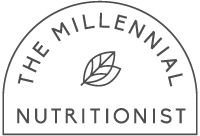Do Red's and Blue's Powders Help with Weight Loss?
Written By Vanessa Carrillo, BS
Have you noticed fitness influencers promoting yet another brightly colored powder and wondered whether you should take it for weight loss or health benefits? Today, we're going to explore the red and blue superfood powder and whether the claims made about it are backed by science.
Many of the product's claims are based on the antioxidants present in the berries and fruit powder it contains. It's true that fruits and berries are a natural source of antioxidants because they contain phytochemicals. However, the question we need to ask is how bioavailable these antioxidants are once they've been converted into a powder.
What does science have to say about it?
The bioavailability of antioxidants is affected by several factors, such as your body's absorption and metabolism. Each phytochemical has its own unique bioavailability, which means that the most antioxidant-rich foods in our diet aren't necessarily those with the highest concentrations (1). A small study has shown that liquid forms of antioxidants are more active and bioavailable than dry forms (2).
Moreover, antioxidant supplements don't seem to offer any health benefits because antioxidants work better in combination with other nutrients, phytochemicals, and antioxidants! Randomized placebo-controlled trials have shown that taking single antioxidants doesn't provide any protection against heart disease, cancer, or other chronic conditions. Even the largest trials have had disappointing results (3).
So what does this mean for you?
Save your money, and buy fresh produce instead! It's disappointing that there isn't a magic pill or supplement that can instantly improve our overall health journey. However, nothing beats the price and nutrition of old-fashioned fruits and vegetables.
Resources
Carlsen, Monica H et al. “The total antioxidant content of more than 3100 foods, beverages, spices, herbs and supplements used worldwide.” Nutrition journal vol. 9 3. 22 Jan. 2010, doi:10.1186/1475-2891-9-3
U. Cornelli, R. Terranova, S. Luca, M. Cornelli, A. Alberti, Bioavailability and Antioxidant Activity of Some Food Supplements in Men and Women Using the D-Roms Test as a Marker of Oxidative Stress, The Journal of Nutrition, Volume 131, Issue 12, December 2001, Pages 3208–3211, https://doi.org/10.1093/jn/131.12.3208
Harvard T.H. School of Public Health. “Antioxidants.” The Nutrition Source, 3 Mar. 2021, https://www.hsph.harvard.edu/nutritionsource/antioxidants/#antioxidants%20and%20disease%20prevention%20studies.
About the Author
Vanessa Carrillo BS Nutritional Science
Contributing Editor
Vanessa is a Chicago-based community nutritionist. She has a BS in Nutritional Science from Iowa State University.
She enjoys writing about Latino food, trendy health products, and pop culture. She writes, edits, and creates content for The Millennial Nutritionist. If she’s not working, you can find her running with her Husky along Chicago’s lakefront path. Catch more of her on The Millennial Nutritionist Podcast.


